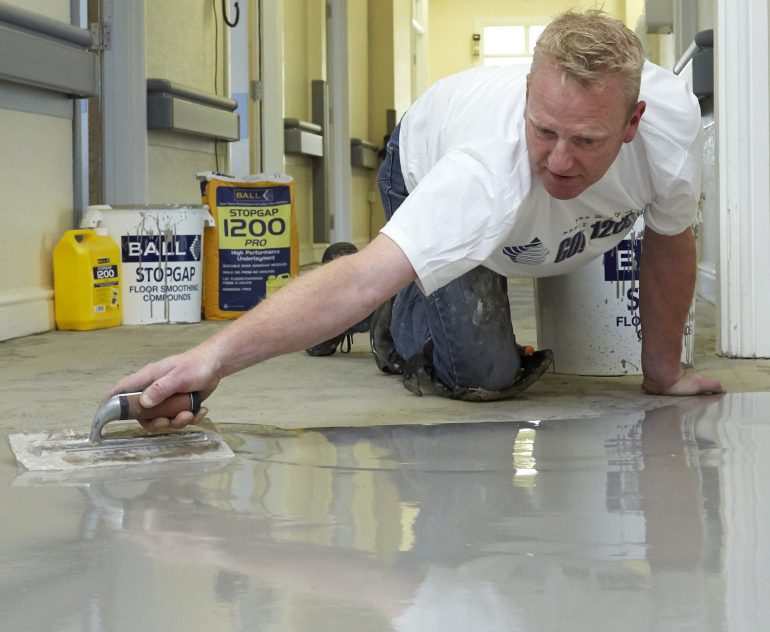Q: Can Styccobond F41 be used over unknown adhesive residues where previous carpet tiles have been removed?
A: No. You’ll will need to either remove old adhesive residues first or apply Stopgap 1200 Pro, which is suitable for use over old adhesive residues without the need to prime.
Q: What levelling compound can be used over a damaged tile floor, where some tiles are missing?
A: The raes where the odd tiles are missing can be filled using Stopgap 400 Repair or Stopgap 460 Exterior Repair for wet areas. Stopgap 1200 pro can then be applied over the entire area to achieve a smooth surface ready for the installation of a new floorcovering.
Q: After removing old LVTs, can a waterproof surface membrane be applied over the old waterbased adhesive residues?
A: No. If a waterproof surface membrane is required, you must first mechanically remove all old adhesive residues before installing to create a sound, clean surface. Stopgap F77 can then be applied.
Q: I need to install a hard wearing surface where a waterproof surface membrane is required. What should I use?
A: After making sure the subfloor is suitably sound, smooth and dry, the waterproof surface membrane should be applied first. One coat of Stopgap F77 will impede the passage of residual construction moisture and rising damp where relative humidity levels in the subfloor are up to 98%. Then a primer should be used to promote adhesion between a subsequently applied levelling compound. F. Ball’s new Stopgap P141 is formulated for use over non-absorbent surfaces, such as epoxy waterproof surface membranes. Finally, apply Stopgap 800 Wearcoat industrial grade levelling compound.
Q: What adhesive should be used for reclaimed wood blocks?
A: Use Styccobond B95. The high performance, flexible wood flooring adhesive can be used for securing a wide range of wood floorcoverings. However, you’ll first have to remove all traces of old adhesive from at least one surface to ensure either the back of the timber and/or the floor is absorbent.
Q: We’re looking to install carpet tiles in a car showroom, where cars will be driven over the tiles and wheels turned in place. What should we use to install them?
A: Typically, you would use Styccobond F41 carpet tile tackifier, which dries to a permanently tacky film and allows individual carpet tiles to be easily lifted and replaced, such as when damaged. In this case, the forces exerted by the vehicles may cause the carpet tiles to ruck when adhered with a carpet tile tackifier, so we’d suggest using a vinyl adhesive, such as Styccobond F49 Hybrid PS, to form a permanent bond.
Q: What levelling compound should I use over a Gyvlon screed?
A: Gyvlon install anhydrite screeds, so we’d recommend using F. Ball’s calcium sulphate-based levelling compound – Stopgap 1100 Gypsum. Before application, it’s essential that the subfloor is completely dry, with all laitance removed. Also, prime with Stopgap P121, which is specially designed for use over calcium sulphate screeds.
Our technical team are on standby to answer questions about your projects and F. Ball products from 7.30am – 5.00pm, Monday to Friday.
Site conditions vary. Don’t rely on these specific responses for your own project. If you are unsure about any technical issue relating to specific flooring installations, contact the F. Ball Technical Service team on 01538 361633 or consult the product data sheets available from F. Ball’s website.


